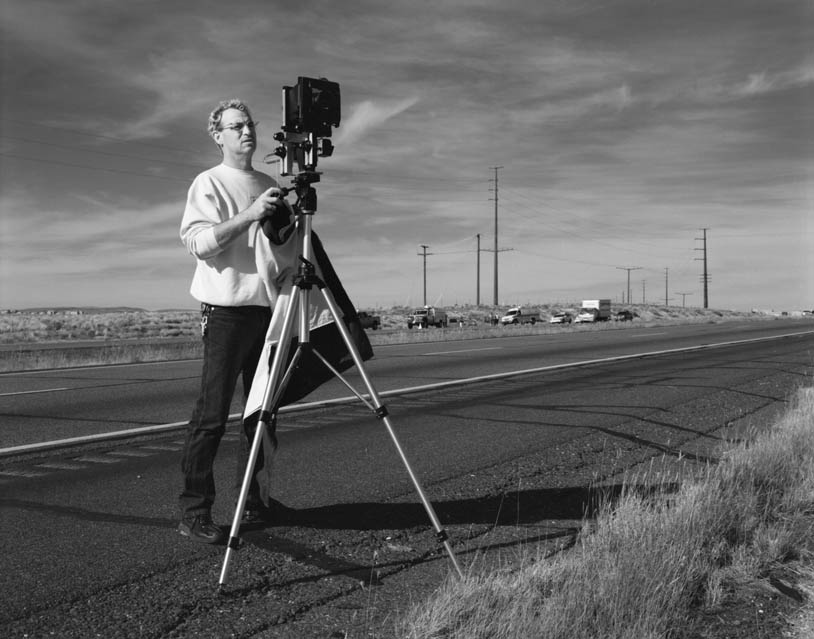I do not think that there is male feminism or female feminism there exists just feminism. When I was coming up through the art world and the feminist movement in the 1960s and 1970s in America, I think that the philosophy of feminism was incorrectly cast as issues of gender. For me, it should have been framed as issues of values. Because of this, men were considered the enemy and all women part of the movement. This was and is not necessarily true.
How I define myself as a feminist is that I do not support a dominant paradigm whether imposed by men or women. Society rewards either gender for supporting this dominant structure. My personal experience has shown that both men and women can be equally supportive of a dominant paradigm. Because of the social pressure and the rewards promised for supporting the dominant paradigm it makes it very difficult for both men and women to stand up to and change these values. I try to act and create work that supports both women and men and especially be a model for other men of how to act in a supportive/cooperative/inclusive manner in an effort to both challenge and change the dominant paradigm model.

Donald Woodman is an American visual artist whose work over more than six decades resists easy categorization — a hybrid practice rooted in photography, multimedia, and film informed ideas. Melding traditional processes with digital innovation, his work probe’s identity, memory, landscape, and the poetic tension between stillness and motion.
Early Life, Training & Influences
Woodman’s path began in the formal structure of architecture: he earned a B.S. in Architecture from the University of Cincinnati (1969). Yet his fascination with image and space quickly drew him into photography and visual experimentation. Early in his career, he worked with or assisted towering figures in 20th century art and photography — including architectural photographer Ezra Stoller, the visionary teacher and photographer Minor White, and minimalist painter Agnes Martin — influences which laid the groundwork for a deeply considered visual sensibility.
In the early 1970s, Woodman moved West and settled in New Mexico, eventually working at the Sacramento Peak Solar Observatory. There he combined scientific photography and film making with experimental visual research, further aligning his eye toward the poetic interplay of light, shadow, and celestial phenomena. In 1981 he received an MFA in Photograph from the University of Houston.
Artistic Practice & Key Themes
For Woodman, the camera has always been both a tool and a partner in exploration — a means to travel between what is seen, remembered, and imagined. Over the years his visual investigations have included landscapes, portraits, the metaphoric realm of the “horizon,” creating introspective series like: The Rodeo and the West, Gay Rodeo, The Therapist, Harbingers of Which Future, Moments of Zen, and more playful or uncanny compositions such as Attractions… Addictions… and Other Kodak Moments.
His imagery often retains an understated, quiet complexity: utilizing the blending of analog and digital techniques. Master of a vast array of skills and materials, Woodman’s work expresses an openness to textural, temporal, and narrative nuance. Moreover, Woodman takes seriously questions of identity, gender, and the nature of observation — informed in part by his long engagement with feminism, he rejects rigid gender frameworks in favor of a more inclusive integration of values.
An indispensable aspect of his practice is his intertwining of film, time-based media, and narrative structure — not always in overt video form, but in the way images unfold, sequence, echo, and linger. Over his career, he has treated still and moving images as a continuum, threading cinematic sensibility into photographic and mixed-media work.
Collaborative Projects & Milestones
For over forty years, Woodman has worked in collaboration with his wife, the artist Judy Chicago. From 1985 to 1993, they co-created the Holocaust Project: From Darkness into Light, a monumental and intimate fusion of photography, painting, and text that toured multiple museums across the U.S. In addition to working together on many other projects, he has contributed to or overseen photographic documentation on many of Chicago’s major works and publications.
In 2015, he published Agnes Martin and Me, a personal illustrated memoir reflecting on his years as assistant, interlocutor, and sometimes critic of the famed painter.
Approach, Voice & Vision
For Woodman, art is not static, it is relational, temporal, and dialogic. He rejects rigid boundaries between genres, embracing instead a fluid engagement with form and content. Intent on preserving autonomy, he has often remained “at the margins” — living and working in the American Southwest rather than chasing metropolitan exposure — in order to safeguard creative freedom. In his own words:
“New Mexico has provided me with a respite from some of the unbearable excesses of civilization … I have chosen to stay out of the limelight in order to preserve the freedom to pursue my personal vision.”
Throughout his long career, Woodman’s vision continues to expand: embracing new media, revisiting old motifs, and threading together memory, image, identity, and narrative. His work remains a quietly radical testament to an artist committed to both technical rigor and poetic openness.